The divine Pithora paintings of Gujarat that adorn the walls of houses in the Panchmahal district of Gujarat, maybe art for outsiders, however, for the Rathwa Adivasis, it is a means to divine communion. The walls adorned by the Pithora painting images are the most sacred and revered part of the house for the Rathwa community.
The Pithora art images are both God and worship for the Rathwa community that inhabits parts of the Panchmahal district apart from other regions in Gujarat. It is believed that this community migrated from the neighbouring state of Madhya Pradesh sometime in the Middle Ages.
So it was with a lot of excitement that we looked forward to seeing the enigmatic tribal Pithora painting in the home of a Rathwa family in the village of Narukot located in the Jambughoda Tehsil of Panchmahal District, Gujarat, India.
Table of Contents
Divine Pithora Paintings – Gujarat’s Mystical Paintings
Pithora paintings are not art for the sake of art, but a complete ritual for the Rathwas. This is a religious ritual that is prevalent among the Rathwas, Bhils, and some other tribes clustered in the districts of Panchmahal and Chhota Udaipur. Tribal Pithora Painting is also practised by some tribes in Madhya Pradesh.
Though commercialization of Pithora Tribal Art is considered taboo, and its use forbade other than that for ritual worship, things have changed over time. A striking example of how the ritual art of Pithora Wall Paintings has grabbed national and international acclaim is that of Bhuri Bai, a Bhil labourer from Madhya Pradesh, who has been bestowed the Padma Shri for her art.
Bhuri Bai was encouraged to paint by J. Swaminathan of Bharat Bhawan in Bhopal. It was the same Swaminathan who also propelled Jangarh Singh Shyam into the global limelight for his legendary Gond painting. The Pithora Painting artist, Paresh Rathwa, of Chhota Udepur, has been recognized with the “Gujarat Travel And Tourism Excellence Award,” in 2021.
Divine Pithora Paintings Of Gujarat – Pithora Wall Paintings At Narkot Village
We were on a trip to the Panchmahal district in Gujarat, and we had a string of interesting places and extraordinary experiences lined up for us. We particularly looked forward to seeing the Pithora paintings of Gujarat in their actual surroundings.
We had been really impressed by the arts and crafts of Nirona village in the Rann of Kutch, and the famed Warli painting that we had seen on our trip to Saputara, but this was the first time that we would be experiencing the enigma of Pithora art, though we had heard a lot about Pithora paintings.
We left the highway behind and walked along a narrow path to reach the village of Narkond, which our guide Bhavesh informed us was also referred to as Pithora village. A couple of cows looked disinterestedly at us. as we passed a cow shed and reached the house of Khuman Rathwa.
He lives here with his family which includes grown-up sons and daughters, and grandchildren.
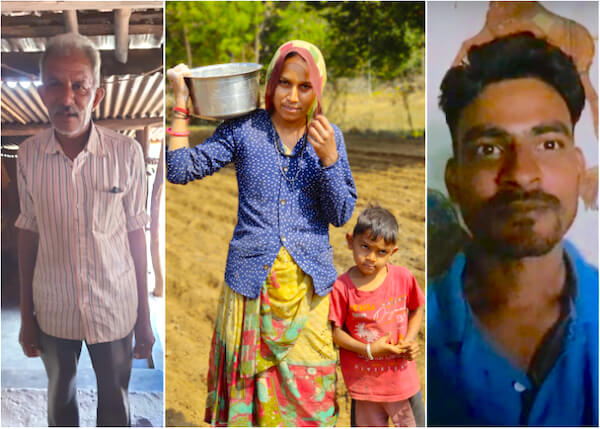
We removed our footwear in reverence to the sanctity of the Pithora wall painting and entered a semi-dark room with a grill door. We found ourselves in a large room, the ceiling reinforced by wooden beams, but what drew our attention were the colourful motifs that adorned the walls.
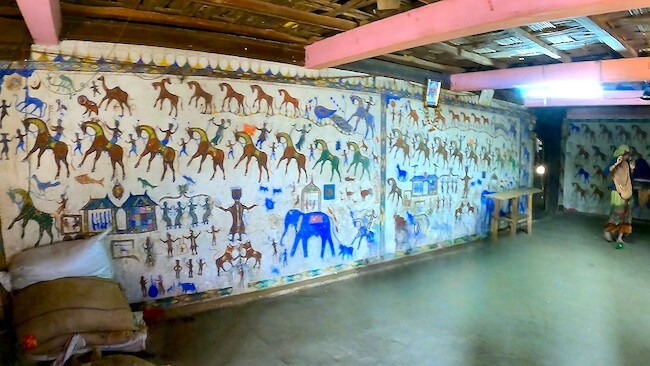
We stood right in front of the famed Pithora paintings of Central Gujarat!
The walls were completely covered with vibrantly coloured motifs. Predominating the walls were the motifs of horses, which are of course a hallmark of Pithora paintings. However, we could also see scenes from nature and everyday life depicted on the walls.
There were palanquin bearers, an elephant, cows, parrots, monkeys, and other birds and animals. We could also see the Sun and the Moon, and women dancing. We could also spot guns kept inside a palanquin. However, the dominant theme was that of horses.
The paintings of course were simple, and you could even call them crude, but there was a ring of honesty and dedication to them. The Pithora folk art is a tribal art that has evolved from early rock art found in caves.
“This Pithora is almost 20 to 25 years old,” says Sanjay Rathwa, the son of Khuman Rathwa. He is a qualified male nurse working in a hospital in the nearby town of Halol. He goes on to add that, every five years the paintings are re-done, and a grand ceremony takes place.
Bhavesh, our guide goes on to add, that not every household can afford to have a Pithora painting done, as the ceremony associated with it includes a feast to which almost the entire village is invited. People sacrifice goats, and it almost amounts to one goat per person.
We looked at the Pithora motifs on the walls of the Rathwa house, trying to decipher their meaning and mystique before moving out to speak to the head of the family, Khuman Rathwa.
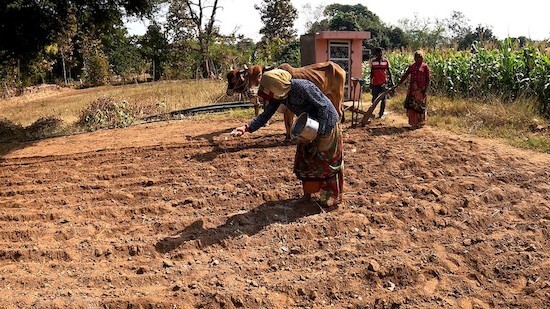
A few of his family members were ploughing the field, and he gestured widely with his arms, showing the extent of the fields that he owned. He has been living here since his birth though originally his family has migrated here.
The Legend of Pithora Art Painting
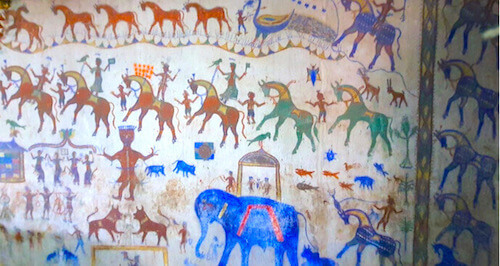
Pithora painting is inextricably linked with the legend of Pithora Baba. According to the tribal legend, the birth of Pithora and his marriage makes for fascinating reading.
Raja Indra who was the King of the Gods had seven sisters. It so happened that one of them, Rani Kadi Koyal, while wandering in the forest met a young king named Raja Kanjurana. She was instantly smitten with love for the young man, and they had a passionate affair. Their union gave birth to a baby, however, Rani Kadi Koyal, feared the wrath of her brother, at what she had done. She floated the baby away in a forest stream.
Providentially the infant was rescued by two other sisters of Raja Indra, named Rani Kajal and Rani Makher. Rani Kajal was instantly attracted to the baby, and after feeding him milk from a wild plant, she brought the baby home and named him, “Pithora.”
Pithora grew up and one day he accidentally broke Rani Kajal’s earthen pot. This angered the Rani and she indirectly chided him, saying, “your maternal uncle (Raja Indra) owns the entire share of the kingdom.” Hearing this Pithora proceeded to the court of Raja Indra to find out who his parents were. Raja Indra heard his entire story and was overjoyed and embraced his nephew. He expressed a desire to get Pithora married. However, Pithora wanted to know about his parents before getting married.
Raja Indra then invited everyone to his court. As soon as Raja Kanjurana arrived, Pithora recognized him as his father. Soon the grand wedding of Pithora with Pithori was organized. All the Gods and Goddesses arrived for the wedding on horses and elephants, and a grand procession was organized.
This divine wedding scene is reflected even today in the Pithora wall paintings.
Pithora Painting History | Pithora Painting Gujarat | Pithora Paintings Of Gujarat
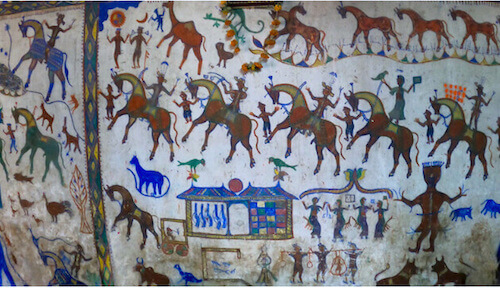
Pithora painting’s origin and its history is as fascinating as the legend associated with it. The divine Pithora paintings are believed to have originated around the 11th century in the region around Bharuch in Gujarat. In those days Bharuch was a thriving port and a hub of trading activity.
However, the interiors of the region could be dangerous if you did not know your way around. The local tribes took it upon themselves to escort traders, both Indian and foreign, through the hills and forests that dotted the region. In return, they would receive silver coins.
The tribals created maps of the trails using codes, this helped them in navigation through the trail and also kept the paths secret from the traders. The seven hills of the region were depicted as seven horses, while the mouth of the river Narmada was depicted using two tigers, and so on.
The leaders requested the tribals to make similar maps (paintings) on the walls of their homes. The loyal ones did so and came to be known as, “Rathwas,” but there were some who declined, and they were categorized as, Talavis.”
As a reward for their loyalty, the Rathwas got access to the hills, and they could settle there. In the early 19th century, the Pithora painting became more of a religious ritual amongst the Rathwas.
It is hard to differentiate between history and legend, the Pithora paintings have different connotations and interpretations, but what cannot be denied is their magnetic beauty hidden in their simplicity and the devotion of the Rathwas to Pithora Baba.
The Ritual Of Divine Pithora Paintings Of Gujarat
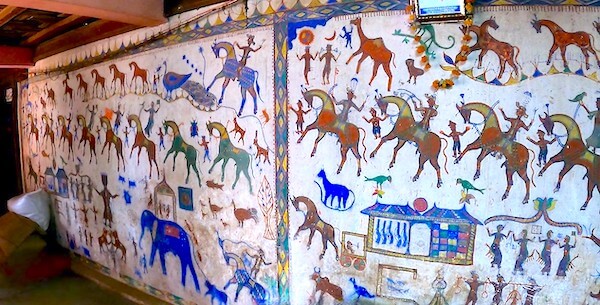
Pithora paintings of Gujarat are associated with traditional rituals of the Rathwa community, and they depict their God Pithora, in a procession. These paintings are believed to usher in peace, prosperity, and harmony in the houses that have them painted. At the same time, proper conditions and discipline needs to be maintained to ensure the sanctity of the painting, and not every Rathwa can have the painting done in their homes.
The divine Pithora paintings are made as a thanksgiving for a boon received, or as a means to solve life’s problems, which could be an illness in the family or among the cattle, or anything else. The images of Pithora paintings in the houses of Rathwa tribes of Central Gujarat, are done on the three walls of the first room through which you enter the house. This is what we found at the house of Khuman Rathwa in the village of Narkot.
The Pithora painting is traditionally done by men only. However, before the painting, the three walls are primed with cow dung and white chalk powder by unmarried girls in a ritual known as, “Lipna.” The paintings are done at three levels. The first level depicts Gods and Goddesses, the second level depicts Pithora and his wedding procession, while the bottom level depicts genesis or the process of creation.
Where To See Authentic Pithora Paintings Of Gujarat
If you want to see authentic Pithora paintings in their natural settings, then you must visit the home of a Rathwa family. They live in the districts of Panchmahal and Chhota Udepur in Central Gujarat as well as some regions of Madhya Pradesh.
If you are visiting Panchmahal, you can visit the village of Narkot in the Jambughoda Tehsil.
Images of Pithora Art | Photos of Pithora Paintings Of Gujarat

The haunting images of Pithora paintings have a strange and enigmatic quality to them. It is as if they are trying to say something to you from the dark corridors of the past. Here are some images that are sure to mystify you too.
Pithora Folk Art FAQ

Pithora painting is from which state?
Pithora painting can be found in regions of Central Gujarat as well as regions of Madhya Pradesh.
What is special about Pithora painting?
Pithora paintings are not paintings but a religious ritual of the Rathwa Adivasis.
What is Pithora art of Gujarat?
Pithora painting of Gujarat is a ritual art associated with the Rathwa Adivasis of Central Gujarat.
Which city is known for Pithora painting?
Pithora Painting can be found in the Panchmahal and Chhota Udepur districts of Gujarat and also in parts of Madhya Pradesh.
Who is the famous artist of Pithora painting?
The most well-known artist of Pithora painting is Bhuri Bai from Madhya Pradesh, who has been conferred the Padma Shri.
What is the origin of Pithora art?
The historical origins of Pithora art are connected to the tribes that lived around Bharuch in Gujarat around the 11th century. It is believed that the art originated from coded maps that they created to guide traders across dangerous roads.
What is the meaning of Pithora?
Pithora is the name of the deity worshipped by the Rathwa Adivasis.
We hope you are as fascinated by reading about the mystical and divine Pithora paintings, as we were seeing them up close. Do share your thoughts through our comments section. And do not forget to subscribe to our blog and follow us on our social media channels.
Our visit to Panchmahal District in Gujarat was part of a familiarization trip organized by India Tourism Mumbai – Ministry of Tourism, Government of India and Panchmahal District Administration. The views and opinions expressed in this blog post are our own. #Pithora Paintings #ExplorePanchmahal #IncredibleIndia #DekhoApnaDesh #Gujarat #travel #panchmahaltour #exploringpanchmahal
We are a reader-supported site. This means, at no additional cost to you, we may earn a small commission if you book a flight or hotel, or make a purchase through one of our affiliate links. Thank you for your support!
Flights – Air India (Domestic) or Air India (International), or Priceline
Tours – Click to book top tours around the world. Book tours and activities here.
Experiences – Book your next unforgettable experience here, with flexible bookings and free cancellations. Reserve tours and activities now and pay later.
Hotels – Click to book the best hotels/resorts. Choose the best stay options with TripAdvisor or Hotels.com, or HotelsCombined
Travel Insurance – Click to book Travel Insurance that covers a range of travel insurance and safety services including medical emergencies, lost luggage, trip cancellation and more
Visas and Travel Documents Application – Click here for Online Travel Visa Check
Online Passport Photo – Get Your Passport Photo Online here
Do You Love Traveling?
Do you want to know how to travel the world? We have put together a very useful travel resources page with the best travel tips. Go check it out now. Thanks for visiting our site Voyager - imvoyager.com and taking the time to read this post! If you wish to collaborate/work with us then reach us at [email protected] We’d love it if you’d comment by sharing your thoughts on this post and share this post on social media and with your friends. Follow our journey on our social media channels: Facebook X Instagram Pinterest YouTube
Start dreaming about your next adventure with Tripadvisor. Book your next unforgettable experience here with flexible bookings and free cancellations.
Flight booking online at the best fare
60+ Million Users Trust TripAdvisor With Their Travel Plans. Shouldn't You?
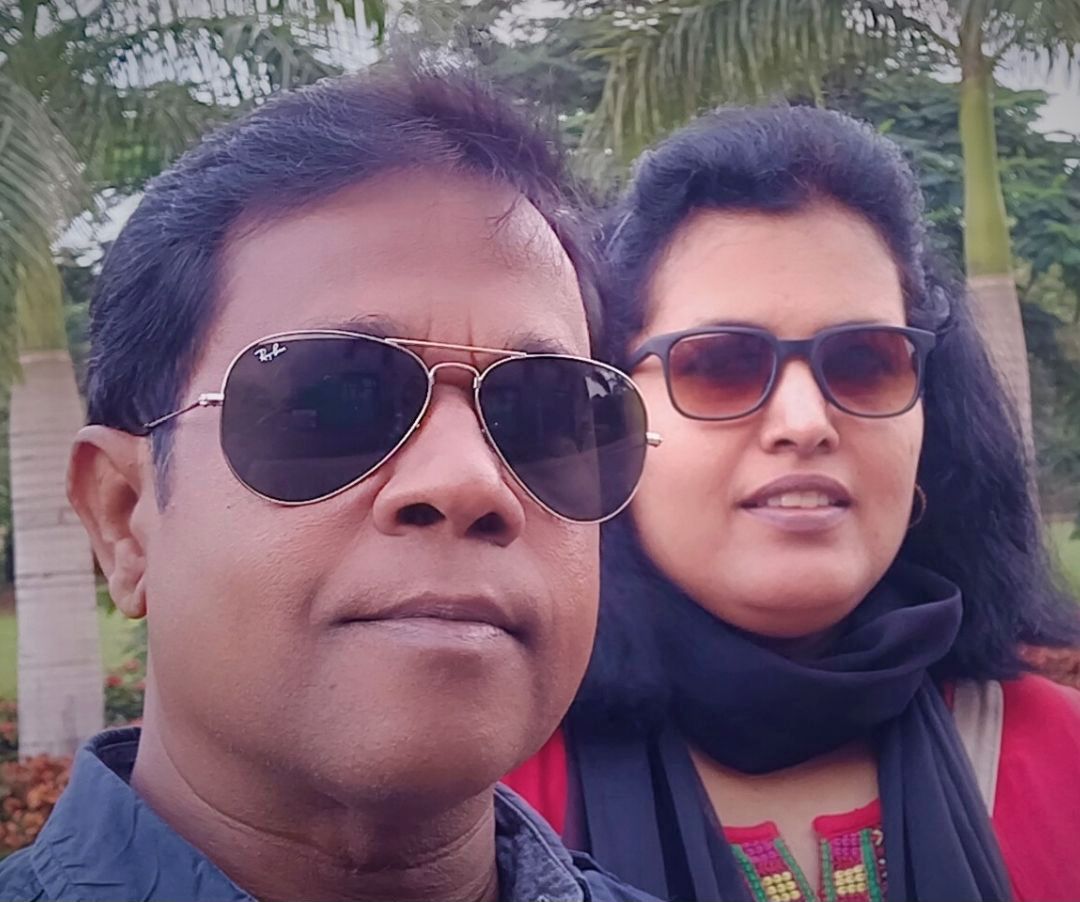
Sandy & Vyjay are a husband and wife duo who are travel content creators. They are co-founders of this travel website and are one of the leading travel content creators in India.
Sandy & Vyjay quit their successful corporate careers to pursue their passion for travel and writing full-time. Their dedication has earned them the “Best Travel Writer” award and numerous accolades on both national and international stages. Focusing on India’s destinations, heritage, and culture, they are passionate advocates for nature and the environment. Through their content, they promote ecotourism and sustainable travel, inspiring others to explore and preserve the beauty of India.


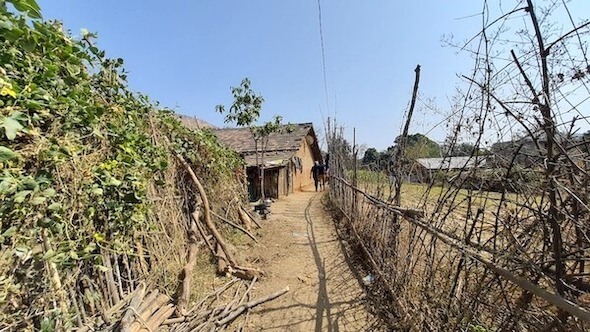
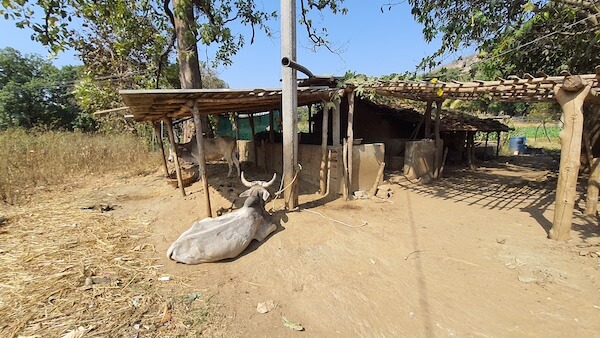
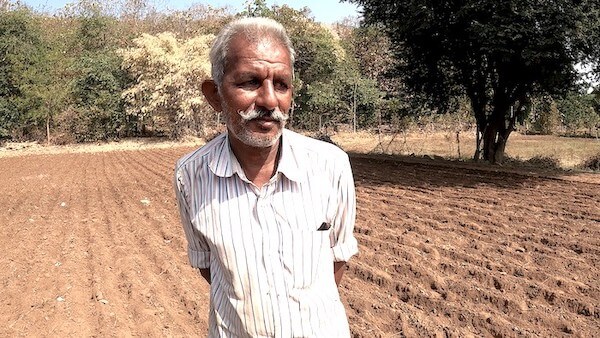








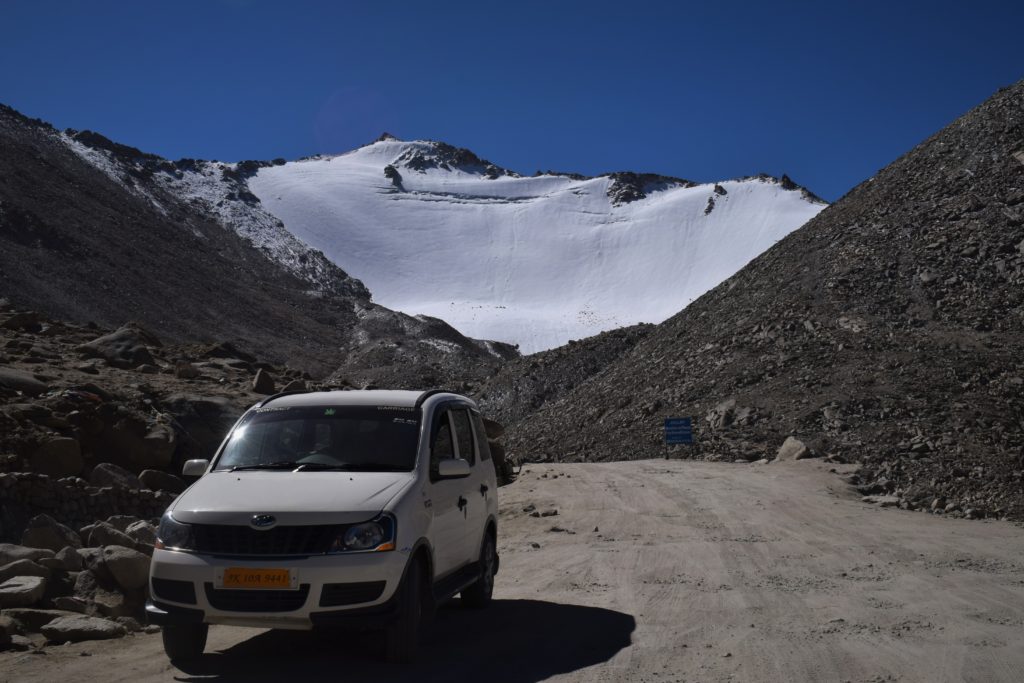
Incredible coloring and attention to detail. Plus the artwork sits in an authentic village setting. Life feels more fascinating well off of the beaten travel path, right?
Ryan
The effort that you invest in bringing the readers to the heart of India is commendable. Your posts are educative and helpful. Thanks for the efforts else I would.never know about these paintings .
These Pithora paintings are amazing, and so is this article. It’s really given me a lot of insight into the fascinating art form and its history. I’m looking forward to learning more about it! Thanks for writing such an interesting and informative article!
Wow it’s nice to know about Pithora paintings, history and culture or other states in India. I also love the various ways in which people have used codes in the old days.
Appreciate you sharing facts about these paintings. It is really something great to add knowledge about something I totally have no idea existed. It’s good to learn something every day, they say, and today, this may be mine. Kudos to your writing!
Wow, I am so thankful to you for introducing Pithora Paintings to your readers. As a country, we have so much art forms to share with the world. I absolutely loved the hues of blue and red/brown used in the paintings. Reading about its history is very enlightening to the readers too. My parents are planning a trip to Gujarat in April and I shall definitely share your post with them.
Fascinating article on the Pithora paintings of Gujarat! It’s amazing to see how this folk art has been preserved and continues to inspire creativity.
I love to see the ancient art and paintings on wall. It speaks alot about the culture and generations. In india, we have these at very few places. Thanks for talking about these ones. ❤️
I am glad that writers like you are there who make the effort to bring under limelight the traditional art forms of India in such a beautiful and educative manner. Thank you for enhancing by knowledge about Pithora paintings of Gujrat.
I have always loved your itinerary
You explained everything so well
The pithora paintings look fabulous would love to visit
This tradition started long back when artists used to display their elation for harvesting and fertility. The pithora paintings look fabulous would love to visit.